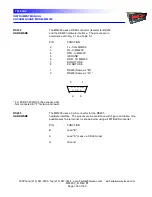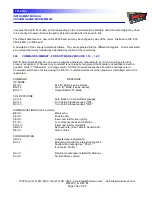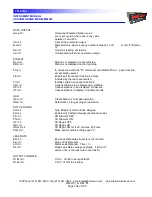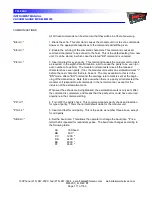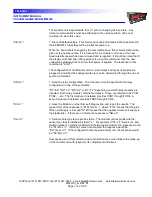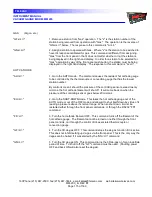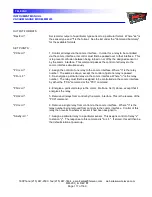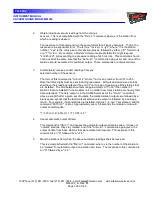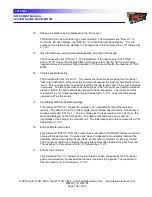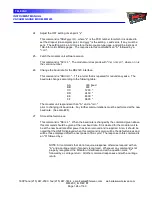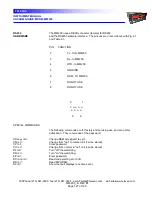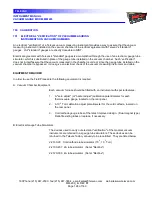
INSTRUMENT MANUAL
VACUUM GAUGE MODEL MM200
160Phone:(215) 947-2500 fax:(215) 947-7464 e-mail:sales@televac.com web site:www.televac.com
MM-200_im REV M
Page 117 of 160
TELEVAC
OUTPUT FORMATS
"Rssf<cr>"
Set recorder output of a particular type sensor to a particular format. Where "ss" is
the sensor type and "f" is the format. See the list under the "Command Summary"
for the available formats.
SET POINTS
"PCA<cr>"
1. Control all relays via the comm. interface. In order for a relay to be controlled
via the comm. interface, its control must first be passed over to that interface. This
is to prevent confusion between being turned on or off by the assigned sensor or
by the comm. interface. This command passes the control of all relays to the
comm. interface simultaneously.
"PCn<cr>"
2. Assign the control of one relay to the comm. interface. Where "n" is the relay
number. The same as above, except the control of just one relay is passed.
"PFn<cr>"
3. De-energize a particular relay via the comm. interface. Where "n" is the relay
number. The relay must first be assigned to be controlled via the comm. interface
by either the "PCA" command or the "PCn" command.
"PNn<cr>"
4. Energize a particular relay via the comm. interface. As (3) above, except that it
energizes the relay.
"PUA<cr>"
5. Remove all relays from control by the comm. interface. This is the reverse of the
"PCA" command.
"PUn<cr>"
6. Remove a single relay from control via the comm. interface. Where "n" is the
relay number being removed from control via the comm. interface. Control of this
relay then reverts to whatever sensor it had been assigned to.
"SAxSy<cr>"
7. Assign a particular relay to a particular sensor. This assigns control of relay "x"
to station "y". The response to this command is "A<cr>". If stored, this will then be
the default station at power-up.

